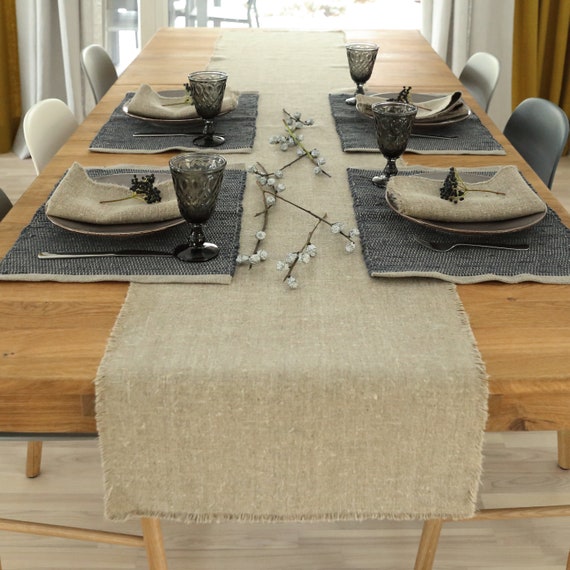Bed Linen Fabric Developments: Checking Out Modern Trends and Creative Applications in Layout and Textile Market
From lasting manufacturing techniques to sophisticated weaving modern technologies, the evolution of linen is reshaping the landscape of the textile industry. As we delve into the worlds of imaginative layout applications and the appearance of bed linen blends and crossbreed fabrics, a new phase unravels in which linen's duty in future fabric advancements takes center phase.
Lasting Practices in Linen Production
Sustainable practices in linen production have ended up being significantly crucial in the fabric industry's initiatives to reduce environmental influence and advertise honest sourcing techniques. Linen, an all-natural fiber acquired from the flax plant, provides a range of advantages such as biodegradability, durability, and breathability. Nonetheless, standard approaches of linen production can include considerable water consumption, chemical use, and energy-intensive procedures.
To deal with these difficulties, several fabric makers are embracing sustainable practices throughout the bed linen production procedure. This consists of sourcing flax from natural ranches that avoid unsafe pesticides and chemicals, executing water-efficient retting techniques to essence fibers from the flax stalks, and utilizing environmentally friendly dyes and finishes. In addition, some business are buying eco-friendly energy resources to power their production centers and reducing waste with recycling and upcycling initiatives.
Technical Developments in Bed Linen Weaving
With the growing focus on lasting practices in bed linen production, the fabric industry is currently observing a surge in technical advancements particularly focused on reinventing the art of bed linen weaving. These developments are improving the means linen materials are produced, using increased effectiveness, high quality, and creative thinking in weaving techniques.
One of the essential technological improvements in linen weaving is the integration of electronic looms. These advanced looms are geared up with software that enables elaborate and complex designs to be woven with accuracy. By digitizing the weaving process, suppliers can accomplish higher consistency and accuracy in their linen materials.
Furthermore, developments in yarn spinning technology have made it possible for the manufacturing of finer and more resilient bed linen yarns - table cloths. This causes softer and smoother linen textiles that keep their high quality also after numerous uses and laundries
In addition, the development of green dyeing processes and surfaces for linen textiles is obtaining traction. These sustainable techniques not only decrease the ecological impact but also deal with the enhancing customer need for ethically produced fabrics.
Creative Layout Applications for Bed Linen
Ingenious imaginative strategies are progressively forming the innovative style applications for bed linen in the textile industry. Bed linen's natural aesthetic appeal and capacity to blend with various other fabrics make it a favored selection for developing special garments and devices that cater to the ecologically conscious consumer.
In addition, developers are explore linen in home decor, utilizing its breathable and long lasting nature to craft stylish furnishings such as curtains, bedding, and upholstery. The structure and drape of linen bring a feeling of refinement and convenience to indoor rooms, including a touch of style to modern homes.

Linen Blends and Hybrid Fabrics

Crossbreed materials, on the other hand, take the principle of blending a step better by integrating additional aspects such as metal strings, recycled materials, or conductive fibers. These innovative textiles not just broaden the design opportunities however also introduce functional elements like conductivity, antimicrobial residential or commercial properties, or enhanced resilience. Crossbreed textiles are significantly being used in numerous sectors, including style, interior decoration, and technological fabrics, where the need for multifunctional products gets on the surge.
Linen's Function in Future Textile Innovations
:max_bytes(150000):strip_icc()/best-tablecloths-fw-FT-AFF1122-702aafd872a649dfaa0f1d1d0ffd171c.jpg)
In the realm of future textile advancements, bed linen is anticipated to be a principal in the advancement of sophisticated practical fabrics. Developers and scientists are checking out see it here means to boost bed linen's integral high qualities via technological developments, such as integrating wise textiles, nanotechnology, and performance finishes. These developments aim to raise linen's efficiency features, making it suitable for a more comprehensive variety of applications, from activewear to safety garments.
In addition, the mix of bed linen with other natural or synthetic fibers opens up limitless possibilities for producing novel fabrics with special residential or commercial properties and performances. By leveraging bed linen's characteristics and checking out innovative blends, the textile industry is poised to introduce exciting advancements that satisfy evolving customer demands and sustainability demands.
Verdict
In conclusion, the exploration of lasting practices, technical innovations, imaginative style applications, bed linen blends, and its duty in future fabric advancements highlight the continuous development of bed linen fabric in the modern-day style and textile sector. With a concentrate on innovation and imagination, the adaptability and green nature of bed linen make it a valuable product for manufacturers and designers alike, leading the method for further advancements and developments in the field of textiles.
As we dive into the realms of creative site link layout applications and the appearance of linen blends and hybrid textiles, a new phase unravels in which linen's duty in future fabric technologies takes center stage.
Checking out the blend of bed linen with other fabrics has led to the emergence of cutting-edge blends and hybrid textiles check in the modern fabric sector. Linen blends provide an one-of-a-kind combination of the qualities of bed linen with those of other fibers, resulting in textiles that possess boosted residential properties such as enhanced toughness, enhanced draping, and reduced wrinkling.The advancement of bed linen blends and crossbreed fabrics has set the stage for Linen to play an essential function in driving future textile innovations.In the world of future textile developments, linen is expected to be a key gamer in the growth of sophisticated useful fabrics.
Comments on “Beautiful Table Cloths: Boost Your Dining Room Design”